-
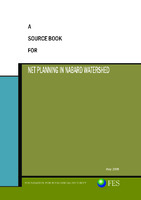 FOUNDATION FOR ECOLOGICAL SECURITY NET PLANNING IN NABARD WATERSHED
FOUNDATION FOR ECOLOGICAL SECURITY NET PLANNING IN NABARD WATERSHED The "Source Book for Net Planning in NABARD Watershed" serves as a comprehensive guide for planning soil and water conservation measures within NABARD-funded watersheds. It outlines the net planning process, including data collection, technical surveys, and the creation of treatment maps, all aimed at facilitating project proposals during the Capacity Building Phase. The guidelines detail the parameters for assessing land capability and provide simplified formats for easy data recording by field staff. Additionally, the document includes specific structural recommendations for various soil and water conservation interventions, manpower requirements for different project stages, and essential documentation needed for effective watershed management.
-
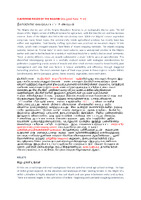 Cultivated food of The Nilgiris_Tamil
Cultivated food of The Nilgiris_Tamil The Nilgiris district, part of the Nilgiris Biosphere Reserve, features diverse ecological zones that influence agricultural practices. Historically, shifting agriculture gave way to mixed cropping systems, which enhance biodiversity and support local diets. Key cultivated crops include millets, pulses, vegetables, and grains, often grown using traditional methods without chemical inputs. The community also relies on a variety of uncultivated edible plants, with extensive knowledge of over 70 species used for nutrition and medicinal purposes. These practices contribute to local food security and cultural heritage, emphasizing the importance of sustainable agricultural techniques in this region.
-
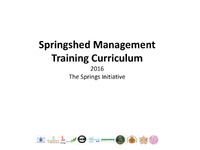 Springshed Management Training Curriculum
Springshed Management Training Curriculum The Springs Initiative's training curriculum includes a case study on the ecological restoration of Happy Valley, a wetland in Nilgiris managed by the Keystone Foundation. Established in 2006, this area serves as a vital water source for local households but faced significant degradation due to encroachment and pollution. Restoration efforts included planting native species, creating a nursery for local plants, and engaging the community through educational activities and waste cleanup. By 2015, the restoration showed positive results, with increased biodiversity and improved water levels, demonstrating the benefits of community involvement in environmental management.
-
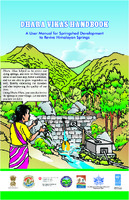 DHARA VIKAS HANDBOOK A User Manual for Spring shed Development to Revive Himalayan Springs Government of India
DHARA VIKAS HANDBOOK A User Manual for Spring shed Development to Revive Himalayan Springs Government of India The Dhara Vikas Handbook is a comprehensive guide by the Government of Sikkim, aimed at reviving Himalayan springs through springshed development. It highlights the critical impacts of drying springs on communities, particularly women, who face water scarcity due to climate change and increased demand. The initiative focuses on enhancing groundwater recharge via strategies like artificial recharge structures, sustainable land use, and community engagement in resource management. It outlines an eight-step action plan for implementation, including resource mapping and baseline studies, to ensure the sustainable revival of springs and improve rural water security in the region.
-
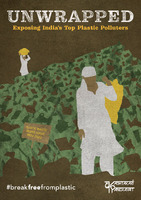 UNWRAPPED_ Exposing India’s Top Plastic Polluters
UNWRAPPED_ Exposing India’s Top Plastic Polluters The 2021 Brand Audit in India engaged over 1,000 volunteers across 19 states to document plastic waste and identify top polluters, revealing that Coca-Cola, PepsiCo, and Unilever dominate. The audit found that 70% of the 149,985 plastic pieces examined were branded, with multi-layered plastics, which are largely non-recyclable, constituting 35% of the waste. The report critiques corporate practices that externalize waste management costs onto informal waste pickers, who play a crucial role in recycling. It calls for stronger regulations mandating the phase-out of non-recyclable plastics, investment in sustainable systems, and formal recognition of waste pickers to effectively tackle the plastic crisis.
-
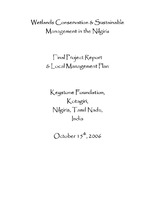 Wetlands conservation and sustainable management in the nilgiri's
Wetlands conservation and sustainable management in the nilgiri's The report focuses on the conservation and sustainable management of wetlands in the Nilgiris, Tamil Nadu, highlighting their crucial role in biodiversity and the livelihoods of local communities, particularly Indigenous groups like the Todas and Badagas. Wetlands, often undervalued and threatened by agriculture and urban development, are essential for water supply and ecological balance. The project involved data collection, awareness campaigns, and the creation of local management plans for five key wetlands, aiming to address pollution, habitat degradation, and stakeholder involvement in conservation efforts. Active restoration activities were initiated to enhance wetland health and community engagement.
-
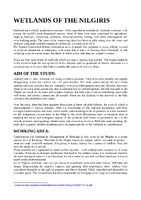 Wetlands in the Nigiris_ Report
Wetlands in the Nigiris_ Report The wetlands in the Nilgiris are critical but increasingly endangered ecosystems due to human activities such as agriculture, urban development, and pollution. These ecosystems, often overlooked and seen as wastelands, provide essential services like water supply, biodiversity support, and flood control. The Ramsar Convention has highlighted the need for their conservation since 1971. Studies in the region reveal significant wetland degradation, exacerbated by invasive species and poor land management practices. Conservation efforts, including community awareness and sustainable land use practices, are crucial to restore and protect these vital habitats for future generations.
-
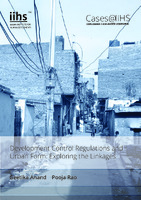 Development control regulations
Development control regulations The Indian Institute for Human Settlements (IIHS) has produced 30 cases focusing on urban inclusion through a collaborative research project called 'Reframing Urban Inclusion'. The cases aim to rethink urban theory and practice from India, South Asia, and the Global South. The project has three thematic foci: conceptualizing pro-poor planning, re-visiting settlement upgrading, and addressing slums in India. The cases aim to provide new evidence of possible opportunities and mechanisms for urban integration and build a conceptual and empirical foundation for politically, socially, and economically inclusive cities.
-
 Can peri urban development choose partnerships
Can peri urban development choose partnerships The Indian Institute for Human Settlements (IIHS) is producing 30 cases focusing on urban inclusion. The cases aim to rethink urban theory and practice from India, South Asia, and the Global South. The cases are distributed through open access modes to encourage diverse use and provide a new canon for scholars and educators in the Global South. The project has three thematic foci: conceptualizing pro-poor planning, re-visiting settlement upgrading, and addressing slums in India. The aim is to provide new evidence of possible opportunities and mechanisms for urban integration.
-
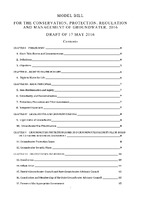 MODEL BILL FOR THE CONSERVATION, PROTECTION, REGULATION AND MANAGEMENT OF GROUNDWATER
MODEL BILL FOR THE CONSERVATION, PROTECTION, REGULATION AND MANAGEMENT OF GROUNDWATER The 2016 Model Bill for the Conservation, Protection, Regulation, and Management of Groundwater aims to address the ongoing groundwater crisis in India, characterized by over-extraction and contamination, which threatens drinking water security and livelihoods. It recognizes groundwater as a common pool resource and establishes a legal framework to ensure equitable access and sustainable management through local governance structures like Gram Panchayats, urban committees, and councils. The Bill emphasizes the right to safe water, prioritizes groundwater for basic human needs, and mandates comprehensive planning, monitoring, and regulatory measures to protect water resources while promoting conservation and community participation.
-
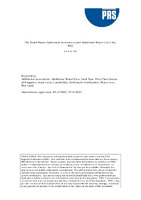 The Tamil Nadu (Additional Assessment and Additional Water-Cess) Act,
1963
The Tamil Nadu (Additional Assessment and Additional Water-Cess) Act,
1963 The Tamil Nadu Additional Assessment and Additional Water-Cess Act of 1963 establishes a framework for levying additional assessments and water-cess on specific lands in Tamil Nadu. It aims to regulate land revenue for irrigation purposes, defining terms related to irrigation sources and land types. Amendments have been made over the years to clarify definitions and adjust rates for different crop types. The document includes disclaimers about the reliability of the information provided, stating that it should not be solely relied upon for legal or professional decisions, and emphasizes that authoritative texts should be consulted for accuracy.
-
 The Tamil Nadu Town and Country Planning (Amendment) Act
The Tamil Nadu Town and Country Planning (Amendment) Act The Tamil Nadu Town and Country Planning (Amendment) Act, 2010, received the Governor's assent on November 29, 2008, and is set to take effect from January 1, 2011. This Act amends the original Town and Country Planning Act of 1971 by introducing Section 47-A, which requires individuals seeking to develop land in non-planning areas to apply for permission from local authorities. Prior approval from the Director and, in cases involving wet lands, from the District Collector is also necessary. The Act outlines the consequences for unauthorized land development and specifies the definition of "wet land" as per existing legislation.
-
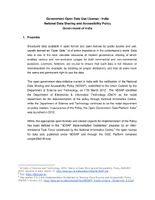 Government Open Data Use License - India National Data Sharing and Accessibility Policy Government of India
Government Open Data Use License - India National Data Sharing and Accessibility Policy Government of India The Government of India's National Data Sharing and Accessibility Policy (NDSAP), established in 2012, emphasizes the importance of open data for governance and public use. This policy facilitates accessible, structured data under an open license, allowing users to adapt and redistribute data for both commercial and non-commercial purposes. Users must provide proper attribution and cannot misuse or misrepresent the data. Exemptions include personal information and data not authorized for sharing. The license is governed by Indian law, includes provisions for dispute resolution, and mandates that published data remain available for reference.
-
 Ooty Urbanization in Ecologically Fragile Area
Ooty Urbanization in Ecologically Fragile Area The case study on Ooty, part of the Rockefeller-IIHS initiative, examines urbanization in the ecologically sensitive Western Ghats, highlighting the challenges of balancing development and environmental conservation. With nearly 48% of the Western Ghats' population in urban areas, understanding urban impacts is crucial. Ooty's growth trajectory reflects its unique ecological context, necessitating governance frameworks that address both urban planning and environmental preservation. The study emphasizes the need for integrated strategies to mitigate environmental degradation while accommodating urban demands, particularly in tourism, which strains local resources and infrastructure. Sustainable practices are essential to preserve the region's biodiversity and cultural heritage.
-
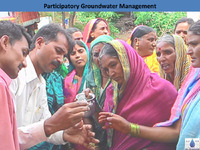 Participatory Groundwater Management
Participatory Groundwater Management Participatory Groundwater Management (PGWM) emphasizes community involvement in managing groundwater resources, addressing issues related to equity and sustainability. Traditional methods have often neglected community perspectives and supportive legal frameworks. Successful initiatives like Pani Panchayat in Maharashtra and APFAMGS in Andhra Pradesh showcase how local governance and participatory approaches can effectively manage groundwater. These programs involve collective decision-making, demand management, and sustainable practices, such as banning water-intensive crops. For PGWM to thrive, it requires collaboration, capacity building, and data-driven strategies, ensuring that groundwater is recognized as a common pool resource that benefits all community members.
-
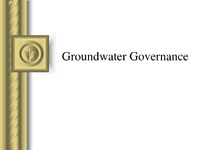 Groundwater Governance
Groundwater Governance Groundwater governance is increasingly important as global groundwater extraction has surged, with India, the USA, and China using nearly half of it. In India, groundwater management faces challenges due to unclear legal frameworks, insufficient data, and weak institutional support. Critical areas like Kerala and Punjab are experiencing over-exploitation. Effective governance requires community participation, regulations, and awareness initiatives. Internationally, many countries have implemented groundwater legislation and agreements to manage shared resources. A proposed model bill emphasizes groundwater as a public trust, advocating for the protection and regulation of this vital resource while promoting sustainable practices.
-
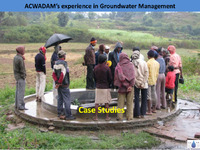 Experience in Groundwater Management Case Studies_ACWADAM
Experience in Groundwater Management Case Studies_ACWADAM ACWADAM's groundwater management initiatives highlight successful community-based strategies in three villages: Pondhe, Muthalane, and Randullabad. In Pondhe, a formal water user group system is established to manage irrigation solely through dug wells, with regulations to prevent overexploitation and ensure equitable water distribution. Muthalane, a tribal region, focuses on community participation and sustainable practices, with new wells and repairs planned to enhance water access. Randullabad employs effective monitoring and management of its aquifers, promoting sustainable irrigation practices. Overall, these case studies demonstrate the importance of community engagement and strategic planning in groundwater management.
-
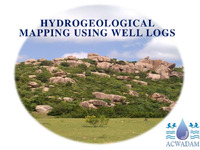 HYDROGEOLOGICAL MAPPING USING WELL LOGS
HYDROGEOLOGICAL MAPPING USING WELL LOGS Hydrogeological mapping involves collecting and representing data on groundwater through well logs. Key methods include using tools like GPS, cameras, clinometers, and field diaries for data collection, while representation is done via Excel, Google Earth, and software like Corel Draw and ArcGIS. Well inventory is critical, documenting details such as depth, casing, water levels, and quality parameters like pH and salinity. This data helps create depth profiles and geologic sections, which are visually represented on maps and graphs to analyze groundwater behavior effectively in specific areas, such as Shambhukalan village in Punjab.
-
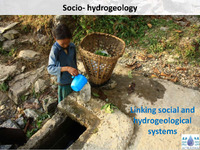 Socio - hydrogeology Linking social and hydrogeological systems
Socio - hydrogeology Linking social and hydrogeological systems The discussion highlights the critical link between groundwater and societal needs in India, where groundwater supplies 90% of rural drinking water and 70% of irrigation. Despite its importance, 60% of Indian districts face groundwater issues related to availability and quality. Key factors influencing groundwater development include technological advancements, land scarcity, and changing cropping patterns. Governance challenges arise from inadequate regulation and enforcement, while competition for groundwater often leads to local inequities rather than outright conflict. Effective management requires a coordinated approach that integrates social equity, economic efficiency, and sustainable practices to address groundwater as a common pool resource.
-
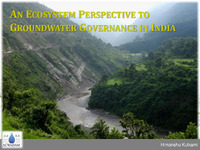 AN ECOSYSTEM PERSPECTIVE TO GROUNDWATER GOVERNANCE IN INDIA
AN ECOSYSTEM PERSPECTIVE TO GROUNDWATER GOVERNANCE IN INDIA The governance of groundwater in India faces significant challenges due to varying aquifer types, overexploitation, and climate change impacts. With over 30 million wells, groundwater serves as a critical resource for both domestic and industrial use, despite being underutilized and poorly managed in many regions. Effective groundwater management requires a comprehensive understanding of aquifer dynamics, community participation, and regulatory frameworks that balance extraction with sustainability. Prioritizing equitable access, protecting recharge areas, and engaging users in decision-making are essential for addressing water scarcity and ensuring long-term water security across diverse ecosystems.
-
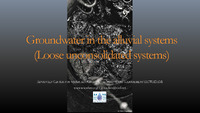 Groundwater in the alluvial systems
Groundwater in the alluvial systems Groundwater management in alluvial aquifer systems, particularly in regions like Neemrana, Rajasthan, presents challenges due to slow recharge and significant vulnerabilities. Effective water management strategies are essential, emphasizing the need for local governance to regulate groundwater use and implement best practices. In North Bihar, where 80% of water sources are groundwater-based, issues like drinking water scarcity and contamination during floods highlight the urgent need for improved sanitation and access to safe water. Reviving traditional water management systems and focusing on recharge structures near ridges can enhance groundwater sustainability in these areas.
-
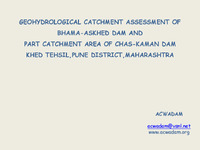 GEOHYDROLOGICAL CATCHMENT ASSESSMENT_ BHAMA -ASKHED DAM AND PART CATCHMENT AREA OF CHAS -KAMAN DAM
GEOHYDROLOGICAL CATCHMENT ASSESSMENT_ BHAMA -ASKHED DAM AND PART CATCHMENT AREA OF CHAS -KAMAN DAM The geohydrological assessment of the Bhama-Askhed Dam and Chas-Kaman Dam catchment areas in Pune, Maharashtra aims to identify vulnerable groundwater recharge zones for infrastructure projects. The study involves geological mapping, drainage analysis, and the development of conservation structure recommendations. Key findings reveal varied geomorphology, with the Bhama river as the primary drainage, and suggest significant recharge vulnerabilities due to disturbances from land-use changes, including windmill installations. The assessment highlights that certain recharge zones are critical for maintaining aquifer potential and emphasizes the need for conservation efforts in these areas to ensure groundwater sustainability.
-
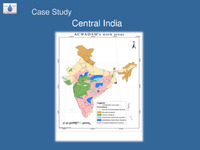 Case Study Central India
Case Study Central India The project in Central India, led by the Advanced Center for Water Resources Development and Management and Samaj Pragati Sahayog, focuses on sustainable groundwater management in Bagli Tehsil, where reliance on groundwater is increasing but data for effective planning is lacking. It involves gathering hydrogeological data and community participation to create a comprehensive understanding of groundwater resources. This includes monitoring water levels, quality, and recharge rates across various aquifers, developing protocols for responsible water use, and implementing measures to protect recharge areas and regulate abstraction. The goal is to ensure equitable management of groundwater resources amid rising demand.
-
 BOHAL SPRING CASE STUDY
BOHAL SPRING CASE STUDY The Bohal Spring, situated in Bohal Village near Palampur, has experienced a decline in water discharge and quality over the past decade due to human activities. To address these issues, a study aims to create a hydrogeological map, identify recharge zones, and develop a spring management plan focused on protection and conservation. Key recommendations include community-led protection initiatives, catchment treatment measures, and monitoring of rainfall and water quality. A formal agreement between the Palampur Municipal Committee and the local Village Forest Development Society will facilitate sustainable management, including financial support and restrictions on resource use to enhance the spring's viability.
-
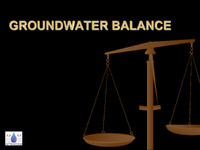 GROUNDWATER BALANCE
GROUNDWATER BALANCE The groundwater balance in an aquifer involves the assessment of inputs like recharge from precipitation and outputs such as discharge from pumping and baseflow. Different watershed scenarios can affect this balance, with variations in aquifer types—deep, shallow, or a combination. Key components include groundwater pumping, which significantly impacts the natural flow and baseflow contributions to streams. The balance can be quantified by measuring discharge and calculating specific yield, which estimates storage changes. For effective management, understanding the relationship between recharge (38% of rainfall) and discharge is crucial, ensuring sustainable aquifer levels amid varying climatic conditions.
 FOUNDATION FOR ECOLOGICAL SECURITY NET PLANNING IN NABARD WATERSHED The "Source Book for Net Planning in NABARD Watershed" serves as a comprehensive guide for planning soil and water conservation measures within NABARD-funded watersheds. It outlines the net planning process, including data collection, technical surveys, and the creation of treatment maps, all aimed at facilitating project proposals during the Capacity Building Phase. The guidelines detail the parameters for assessing land capability and provide simplified formats for easy data recording by field staff. Additionally, the document includes specific structural recommendations for various soil and water conservation interventions, manpower requirements for different project stages, and essential documentation needed for effective watershed management.
FOUNDATION FOR ECOLOGICAL SECURITY NET PLANNING IN NABARD WATERSHED The "Source Book for Net Planning in NABARD Watershed" serves as a comprehensive guide for planning soil and water conservation measures within NABARD-funded watersheds. It outlines the net planning process, including data collection, technical surveys, and the creation of treatment maps, all aimed at facilitating project proposals during the Capacity Building Phase. The guidelines detail the parameters for assessing land capability and provide simplified formats for easy data recording by field staff. Additionally, the document includes specific structural recommendations for various soil and water conservation interventions, manpower requirements for different project stages, and essential documentation needed for effective watershed management. Cultivated food of The Nilgiris_Tamil The Nilgiris district, part of the Nilgiris Biosphere Reserve, features diverse ecological zones that influence agricultural practices. Historically, shifting agriculture gave way to mixed cropping systems, which enhance biodiversity and support local diets. Key cultivated crops include millets, pulses, vegetables, and grains, often grown using traditional methods without chemical inputs. The community also relies on a variety of uncultivated edible plants, with extensive knowledge of over 70 species used for nutrition and medicinal purposes. These practices contribute to local food security and cultural heritage, emphasizing the importance of sustainable agricultural techniques in this region.
Cultivated food of The Nilgiris_Tamil The Nilgiris district, part of the Nilgiris Biosphere Reserve, features diverse ecological zones that influence agricultural practices. Historically, shifting agriculture gave way to mixed cropping systems, which enhance biodiversity and support local diets. Key cultivated crops include millets, pulses, vegetables, and grains, often grown using traditional methods without chemical inputs. The community also relies on a variety of uncultivated edible plants, with extensive knowledge of over 70 species used for nutrition and medicinal purposes. These practices contribute to local food security and cultural heritage, emphasizing the importance of sustainable agricultural techniques in this region. Springshed Management Training Curriculum The Springs Initiative's training curriculum includes a case study on the ecological restoration of Happy Valley, a wetland in Nilgiris managed by the Keystone Foundation. Established in 2006, this area serves as a vital water source for local households but faced significant degradation due to encroachment and pollution. Restoration efforts included planting native species, creating a nursery for local plants, and engaging the community through educational activities and waste cleanup. By 2015, the restoration showed positive results, with increased biodiversity and improved water levels, demonstrating the benefits of community involvement in environmental management.
Springshed Management Training Curriculum The Springs Initiative's training curriculum includes a case study on the ecological restoration of Happy Valley, a wetland in Nilgiris managed by the Keystone Foundation. Established in 2006, this area serves as a vital water source for local households but faced significant degradation due to encroachment and pollution. Restoration efforts included planting native species, creating a nursery for local plants, and engaging the community through educational activities and waste cleanup. By 2015, the restoration showed positive results, with increased biodiversity and improved water levels, demonstrating the benefits of community involvement in environmental management. DHARA VIKAS HANDBOOK A User Manual for Spring shed Development to Revive Himalayan Springs Government of India The Dhara Vikas Handbook is a comprehensive guide by the Government of Sikkim, aimed at reviving Himalayan springs through springshed development. It highlights the critical impacts of drying springs on communities, particularly women, who face water scarcity due to climate change and increased demand. The initiative focuses on enhancing groundwater recharge via strategies like artificial recharge structures, sustainable land use, and community engagement in resource management. It outlines an eight-step action plan for implementation, including resource mapping and baseline studies, to ensure the sustainable revival of springs and improve rural water security in the region.
DHARA VIKAS HANDBOOK A User Manual for Spring shed Development to Revive Himalayan Springs Government of India The Dhara Vikas Handbook is a comprehensive guide by the Government of Sikkim, aimed at reviving Himalayan springs through springshed development. It highlights the critical impacts of drying springs on communities, particularly women, who face water scarcity due to climate change and increased demand. The initiative focuses on enhancing groundwater recharge via strategies like artificial recharge structures, sustainable land use, and community engagement in resource management. It outlines an eight-step action plan for implementation, including resource mapping and baseline studies, to ensure the sustainable revival of springs and improve rural water security in the region. UNWRAPPED_ Exposing India’s Top Plastic Polluters The 2021 Brand Audit in India engaged over 1,000 volunteers across 19 states to document plastic waste and identify top polluters, revealing that Coca-Cola, PepsiCo, and Unilever dominate. The audit found that 70% of the 149,985 plastic pieces examined were branded, with multi-layered plastics, which are largely non-recyclable, constituting 35% of the waste. The report critiques corporate practices that externalize waste management costs onto informal waste pickers, who play a crucial role in recycling. It calls for stronger regulations mandating the phase-out of non-recyclable plastics, investment in sustainable systems, and formal recognition of waste pickers to effectively tackle the plastic crisis.
UNWRAPPED_ Exposing India’s Top Plastic Polluters The 2021 Brand Audit in India engaged over 1,000 volunteers across 19 states to document plastic waste and identify top polluters, revealing that Coca-Cola, PepsiCo, and Unilever dominate. The audit found that 70% of the 149,985 plastic pieces examined were branded, with multi-layered plastics, which are largely non-recyclable, constituting 35% of the waste. The report critiques corporate practices that externalize waste management costs onto informal waste pickers, who play a crucial role in recycling. It calls for stronger regulations mandating the phase-out of non-recyclable plastics, investment in sustainable systems, and formal recognition of waste pickers to effectively tackle the plastic crisis. Wetlands conservation and sustainable management in the nilgiri's The report focuses on the conservation and sustainable management of wetlands in the Nilgiris, Tamil Nadu, highlighting their crucial role in biodiversity and the livelihoods of local communities, particularly Indigenous groups like the Todas and Badagas. Wetlands, often undervalued and threatened by agriculture and urban development, are essential for water supply and ecological balance. The project involved data collection, awareness campaigns, and the creation of local management plans for five key wetlands, aiming to address pollution, habitat degradation, and stakeholder involvement in conservation efforts. Active restoration activities were initiated to enhance wetland health and community engagement.
Wetlands conservation and sustainable management in the nilgiri's The report focuses on the conservation and sustainable management of wetlands in the Nilgiris, Tamil Nadu, highlighting their crucial role in biodiversity and the livelihoods of local communities, particularly Indigenous groups like the Todas and Badagas. Wetlands, often undervalued and threatened by agriculture and urban development, are essential for water supply and ecological balance. The project involved data collection, awareness campaigns, and the creation of local management plans for five key wetlands, aiming to address pollution, habitat degradation, and stakeholder involvement in conservation efforts. Active restoration activities were initiated to enhance wetland health and community engagement. Wetlands in the Nigiris_ Report The wetlands in the Nilgiris are critical but increasingly endangered ecosystems due to human activities such as agriculture, urban development, and pollution. These ecosystems, often overlooked and seen as wastelands, provide essential services like water supply, biodiversity support, and flood control. The Ramsar Convention has highlighted the need for their conservation since 1971. Studies in the region reveal significant wetland degradation, exacerbated by invasive species and poor land management practices. Conservation efforts, including community awareness and sustainable land use practices, are crucial to restore and protect these vital habitats for future generations.
Wetlands in the Nigiris_ Report The wetlands in the Nilgiris are critical but increasingly endangered ecosystems due to human activities such as agriculture, urban development, and pollution. These ecosystems, often overlooked and seen as wastelands, provide essential services like water supply, biodiversity support, and flood control. The Ramsar Convention has highlighted the need for their conservation since 1971. Studies in the region reveal significant wetland degradation, exacerbated by invasive species and poor land management practices. Conservation efforts, including community awareness and sustainable land use practices, are crucial to restore and protect these vital habitats for future generations. Development control regulations The Indian Institute for Human Settlements (IIHS) has produced 30 cases focusing on urban inclusion through a collaborative research project called 'Reframing Urban Inclusion'. The cases aim to rethink urban theory and practice from India, South Asia, and the Global South. The project has three thematic foci: conceptualizing pro-poor planning, re-visiting settlement upgrading, and addressing slums in India. The cases aim to provide new evidence of possible opportunities and mechanisms for urban integration and build a conceptual and empirical foundation for politically, socially, and economically inclusive cities.
Development control regulations The Indian Institute for Human Settlements (IIHS) has produced 30 cases focusing on urban inclusion through a collaborative research project called 'Reframing Urban Inclusion'. The cases aim to rethink urban theory and practice from India, South Asia, and the Global South. The project has three thematic foci: conceptualizing pro-poor planning, re-visiting settlement upgrading, and addressing slums in India. The cases aim to provide new evidence of possible opportunities and mechanisms for urban integration and build a conceptual and empirical foundation for politically, socially, and economically inclusive cities. Can peri urban development choose partnerships The Indian Institute for Human Settlements (IIHS) is producing 30 cases focusing on urban inclusion. The cases aim to rethink urban theory and practice from India, South Asia, and the Global South. The cases are distributed through open access modes to encourage diverse use and provide a new canon for scholars and educators in the Global South. The project has three thematic foci: conceptualizing pro-poor planning, re-visiting settlement upgrading, and addressing slums in India. The aim is to provide new evidence of possible opportunities and mechanisms for urban integration.
Can peri urban development choose partnerships The Indian Institute for Human Settlements (IIHS) is producing 30 cases focusing on urban inclusion. The cases aim to rethink urban theory and practice from India, South Asia, and the Global South. The cases are distributed through open access modes to encourage diverse use and provide a new canon for scholars and educators in the Global South. The project has three thematic foci: conceptualizing pro-poor planning, re-visiting settlement upgrading, and addressing slums in India. The aim is to provide new evidence of possible opportunities and mechanisms for urban integration. MODEL BILL FOR THE CONSERVATION, PROTECTION, REGULATION AND MANAGEMENT OF GROUNDWATER The 2016 Model Bill for the Conservation, Protection, Regulation, and Management of Groundwater aims to address the ongoing groundwater crisis in India, characterized by over-extraction and contamination, which threatens drinking water security and livelihoods. It recognizes groundwater as a common pool resource and establishes a legal framework to ensure equitable access and sustainable management through local governance structures like Gram Panchayats, urban committees, and councils. The Bill emphasizes the right to safe water, prioritizes groundwater for basic human needs, and mandates comprehensive planning, monitoring, and regulatory measures to protect water resources while promoting conservation and community participation.
MODEL BILL FOR THE CONSERVATION, PROTECTION, REGULATION AND MANAGEMENT OF GROUNDWATER The 2016 Model Bill for the Conservation, Protection, Regulation, and Management of Groundwater aims to address the ongoing groundwater crisis in India, characterized by over-extraction and contamination, which threatens drinking water security and livelihoods. It recognizes groundwater as a common pool resource and establishes a legal framework to ensure equitable access and sustainable management through local governance structures like Gram Panchayats, urban committees, and councils. The Bill emphasizes the right to safe water, prioritizes groundwater for basic human needs, and mandates comprehensive planning, monitoring, and regulatory measures to protect water resources while promoting conservation and community participation. The Tamil Nadu (Additional Assessment and Additional Water-Cess) Act,
1963 The Tamil Nadu Additional Assessment and Additional Water-Cess Act of 1963 establishes a framework for levying additional assessments and water-cess on specific lands in Tamil Nadu. It aims to regulate land revenue for irrigation purposes, defining terms related to irrigation sources and land types. Amendments have been made over the years to clarify definitions and adjust rates for different crop types. The document includes disclaimers about the reliability of the information provided, stating that it should not be solely relied upon for legal or professional decisions, and emphasizes that authoritative texts should be consulted for accuracy.
The Tamil Nadu (Additional Assessment and Additional Water-Cess) Act,
1963 The Tamil Nadu Additional Assessment and Additional Water-Cess Act of 1963 establishes a framework for levying additional assessments and water-cess on specific lands in Tamil Nadu. It aims to regulate land revenue for irrigation purposes, defining terms related to irrigation sources and land types. Amendments have been made over the years to clarify definitions and adjust rates for different crop types. The document includes disclaimers about the reliability of the information provided, stating that it should not be solely relied upon for legal or professional decisions, and emphasizes that authoritative texts should be consulted for accuracy. The Tamil Nadu Town and Country Planning (Amendment) Act The Tamil Nadu Town and Country Planning (Amendment) Act, 2010, received the Governor's assent on November 29, 2008, and is set to take effect from January 1, 2011. This Act amends the original Town and Country Planning Act of 1971 by introducing Section 47-A, which requires individuals seeking to develop land in non-planning areas to apply for permission from local authorities. Prior approval from the Director and, in cases involving wet lands, from the District Collector is also necessary. The Act outlines the consequences for unauthorized land development and specifies the definition of "wet land" as per existing legislation.
The Tamil Nadu Town and Country Planning (Amendment) Act The Tamil Nadu Town and Country Planning (Amendment) Act, 2010, received the Governor's assent on November 29, 2008, and is set to take effect from January 1, 2011. This Act amends the original Town and Country Planning Act of 1971 by introducing Section 47-A, which requires individuals seeking to develop land in non-planning areas to apply for permission from local authorities. Prior approval from the Director and, in cases involving wet lands, from the District Collector is also necessary. The Act outlines the consequences for unauthorized land development and specifies the definition of "wet land" as per existing legislation. Government Open Data Use License - India National Data Sharing and Accessibility Policy Government of India The Government of India's National Data Sharing and Accessibility Policy (NDSAP), established in 2012, emphasizes the importance of open data for governance and public use. This policy facilitates accessible, structured data under an open license, allowing users to adapt and redistribute data for both commercial and non-commercial purposes. Users must provide proper attribution and cannot misuse or misrepresent the data. Exemptions include personal information and data not authorized for sharing. The license is governed by Indian law, includes provisions for dispute resolution, and mandates that published data remain available for reference.
Government Open Data Use License - India National Data Sharing and Accessibility Policy Government of India The Government of India's National Data Sharing and Accessibility Policy (NDSAP), established in 2012, emphasizes the importance of open data for governance and public use. This policy facilitates accessible, structured data under an open license, allowing users to adapt and redistribute data for both commercial and non-commercial purposes. Users must provide proper attribution and cannot misuse or misrepresent the data. Exemptions include personal information and data not authorized for sharing. The license is governed by Indian law, includes provisions for dispute resolution, and mandates that published data remain available for reference. Ooty Urbanization in Ecologically Fragile Area The case study on Ooty, part of the Rockefeller-IIHS initiative, examines urbanization in the ecologically sensitive Western Ghats, highlighting the challenges of balancing development and environmental conservation. With nearly 48% of the Western Ghats' population in urban areas, understanding urban impacts is crucial. Ooty's growth trajectory reflects its unique ecological context, necessitating governance frameworks that address both urban planning and environmental preservation. The study emphasizes the need for integrated strategies to mitigate environmental degradation while accommodating urban demands, particularly in tourism, which strains local resources and infrastructure. Sustainable practices are essential to preserve the region's biodiversity and cultural heritage.
Ooty Urbanization in Ecologically Fragile Area The case study on Ooty, part of the Rockefeller-IIHS initiative, examines urbanization in the ecologically sensitive Western Ghats, highlighting the challenges of balancing development and environmental conservation. With nearly 48% of the Western Ghats' population in urban areas, understanding urban impacts is crucial. Ooty's growth trajectory reflects its unique ecological context, necessitating governance frameworks that address both urban planning and environmental preservation. The study emphasizes the need for integrated strategies to mitigate environmental degradation while accommodating urban demands, particularly in tourism, which strains local resources and infrastructure. Sustainable practices are essential to preserve the region's biodiversity and cultural heritage. Participatory Groundwater Management Participatory Groundwater Management (PGWM) emphasizes community involvement in managing groundwater resources, addressing issues related to equity and sustainability. Traditional methods have often neglected community perspectives and supportive legal frameworks. Successful initiatives like Pani Panchayat in Maharashtra and APFAMGS in Andhra Pradesh showcase how local governance and participatory approaches can effectively manage groundwater. These programs involve collective decision-making, demand management, and sustainable practices, such as banning water-intensive crops. For PGWM to thrive, it requires collaboration, capacity building, and data-driven strategies, ensuring that groundwater is recognized as a common pool resource that benefits all community members.
Participatory Groundwater Management Participatory Groundwater Management (PGWM) emphasizes community involvement in managing groundwater resources, addressing issues related to equity and sustainability. Traditional methods have often neglected community perspectives and supportive legal frameworks. Successful initiatives like Pani Panchayat in Maharashtra and APFAMGS in Andhra Pradesh showcase how local governance and participatory approaches can effectively manage groundwater. These programs involve collective decision-making, demand management, and sustainable practices, such as banning water-intensive crops. For PGWM to thrive, it requires collaboration, capacity building, and data-driven strategies, ensuring that groundwater is recognized as a common pool resource that benefits all community members. Groundwater Governance Groundwater governance is increasingly important as global groundwater extraction has surged, with India, the USA, and China using nearly half of it. In India, groundwater management faces challenges due to unclear legal frameworks, insufficient data, and weak institutional support. Critical areas like Kerala and Punjab are experiencing over-exploitation. Effective governance requires community participation, regulations, and awareness initiatives. Internationally, many countries have implemented groundwater legislation and agreements to manage shared resources. A proposed model bill emphasizes groundwater as a public trust, advocating for the protection and regulation of this vital resource while promoting sustainable practices.
Groundwater Governance Groundwater governance is increasingly important as global groundwater extraction has surged, with India, the USA, and China using nearly half of it. In India, groundwater management faces challenges due to unclear legal frameworks, insufficient data, and weak institutional support. Critical areas like Kerala and Punjab are experiencing over-exploitation. Effective governance requires community participation, regulations, and awareness initiatives. Internationally, many countries have implemented groundwater legislation and agreements to manage shared resources. A proposed model bill emphasizes groundwater as a public trust, advocating for the protection and regulation of this vital resource while promoting sustainable practices. Experience in Groundwater Management Case Studies_ACWADAM ACWADAM's groundwater management initiatives highlight successful community-based strategies in three villages: Pondhe, Muthalane, and Randullabad. In Pondhe, a formal water user group system is established to manage irrigation solely through dug wells, with regulations to prevent overexploitation and ensure equitable water distribution. Muthalane, a tribal region, focuses on community participation and sustainable practices, with new wells and repairs planned to enhance water access. Randullabad employs effective monitoring and management of its aquifers, promoting sustainable irrigation practices. Overall, these case studies demonstrate the importance of community engagement and strategic planning in groundwater management.
Experience in Groundwater Management Case Studies_ACWADAM ACWADAM's groundwater management initiatives highlight successful community-based strategies in three villages: Pondhe, Muthalane, and Randullabad. In Pondhe, a formal water user group system is established to manage irrigation solely through dug wells, with regulations to prevent overexploitation and ensure equitable water distribution. Muthalane, a tribal region, focuses on community participation and sustainable practices, with new wells and repairs planned to enhance water access. Randullabad employs effective monitoring and management of its aquifers, promoting sustainable irrigation practices. Overall, these case studies demonstrate the importance of community engagement and strategic planning in groundwater management. HYDROGEOLOGICAL MAPPING USING WELL LOGS Hydrogeological mapping involves collecting and representing data on groundwater through well logs. Key methods include using tools like GPS, cameras, clinometers, and field diaries for data collection, while representation is done via Excel, Google Earth, and software like Corel Draw and ArcGIS. Well inventory is critical, documenting details such as depth, casing, water levels, and quality parameters like pH and salinity. This data helps create depth profiles and geologic sections, which are visually represented on maps and graphs to analyze groundwater behavior effectively in specific areas, such as Shambhukalan village in Punjab.
HYDROGEOLOGICAL MAPPING USING WELL LOGS Hydrogeological mapping involves collecting and representing data on groundwater through well logs. Key methods include using tools like GPS, cameras, clinometers, and field diaries for data collection, while representation is done via Excel, Google Earth, and software like Corel Draw and ArcGIS. Well inventory is critical, documenting details such as depth, casing, water levels, and quality parameters like pH and salinity. This data helps create depth profiles and geologic sections, which are visually represented on maps and graphs to analyze groundwater behavior effectively in specific areas, such as Shambhukalan village in Punjab. Socio - hydrogeology Linking social and hydrogeological systems The discussion highlights the critical link between groundwater and societal needs in India, where groundwater supplies 90% of rural drinking water and 70% of irrigation. Despite its importance, 60% of Indian districts face groundwater issues related to availability and quality. Key factors influencing groundwater development include technological advancements, land scarcity, and changing cropping patterns. Governance challenges arise from inadequate regulation and enforcement, while competition for groundwater often leads to local inequities rather than outright conflict. Effective management requires a coordinated approach that integrates social equity, economic efficiency, and sustainable practices to address groundwater as a common pool resource.
Socio - hydrogeology Linking social and hydrogeological systems The discussion highlights the critical link between groundwater and societal needs in India, where groundwater supplies 90% of rural drinking water and 70% of irrigation. Despite its importance, 60% of Indian districts face groundwater issues related to availability and quality. Key factors influencing groundwater development include technological advancements, land scarcity, and changing cropping patterns. Governance challenges arise from inadequate regulation and enforcement, while competition for groundwater often leads to local inequities rather than outright conflict. Effective management requires a coordinated approach that integrates social equity, economic efficiency, and sustainable practices to address groundwater as a common pool resource. AN ECOSYSTEM PERSPECTIVE TO GROUNDWATER GOVERNANCE IN INDIA The governance of groundwater in India faces significant challenges due to varying aquifer types, overexploitation, and climate change impacts. With over 30 million wells, groundwater serves as a critical resource for both domestic and industrial use, despite being underutilized and poorly managed in many regions. Effective groundwater management requires a comprehensive understanding of aquifer dynamics, community participation, and regulatory frameworks that balance extraction with sustainability. Prioritizing equitable access, protecting recharge areas, and engaging users in decision-making are essential for addressing water scarcity and ensuring long-term water security across diverse ecosystems.
AN ECOSYSTEM PERSPECTIVE TO GROUNDWATER GOVERNANCE IN INDIA The governance of groundwater in India faces significant challenges due to varying aquifer types, overexploitation, and climate change impacts. With over 30 million wells, groundwater serves as a critical resource for both domestic and industrial use, despite being underutilized and poorly managed in many regions. Effective groundwater management requires a comprehensive understanding of aquifer dynamics, community participation, and regulatory frameworks that balance extraction with sustainability. Prioritizing equitable access, protecting recharge areas, and engaging users in decision-making are essential for addressing water scarcity and ensuring long-term water security across diverse ecosystems. Groundwater in the alluvial systems Groundwater management in alluvial aquifer systems, particularly in regions like Neemrana, Rajasthan, presents challenges due to slow recharge and significant vulnerabilities. Effective water management strategies are essential, emphasizing the need for local governance to regulate groundwater use and implement best practices. In North Bihar, where 80% of water sources are groundwater-based, issues like drinking water scarcity and contamination during floods highlight the urgent need for improved sanitation and access to safe water. Reviving traditional water management systems and focusing on recharge structures near ridges can enhance groundwater sustainability in these areas.
Groundwater in the alluvial systems Groundwater management in alluvial aquifer systems, particularly in regions like Neemrana, Rajasthan, presents challenges due to slow recharge and significant vulnerabilities. Effective water management strategies are essential, emphasizing the need for local governance to regulate groundwater use and implement best practices. In North Bihar, where 80% of water sources are groundwater-based, issues like drinking water scarcity and contamination during floods highlight the urgent need for improved sanitation and access to safe water. Reviving traditional water management systems and focusing on recharge structures near ridges can enhance groundwater sustainability in these areas. GEOHYDROLOGICAL CATCHMENT ASSESSMENT_ BHAMA -ASKHED DAM AND PART CATCHMENT AREA OF CHAS -KAMAN DAM The geohydrological assessment of the Bhama-Askhed Dam and Chas-Kaman Dam catchment areas in Pune, Maharashtra aims to identify vulnerable groundwater recharge zones for infrastructure projects. The study involves geological mapping, drainage analysis, and the development of conservation structure recommendations. Key findings reveal varied geomorphology, with the Bhama river as the primary drainage, and suggest significant recharge vulnerabilities due to disturbances from land-use changes, including windmill installations. The assessment highlights that certain recharge zones are critical for maintaining aquifer potential and emphasizes the need for conservation efforts in these areas to ensure groundwater sustainability.
GEOHYDROLOGICAL CATCHMENT ASSESSMENT_ BHAMA -ASKHED DAM AND PART CATCHMENT AREA OF CHAS -KAMAN DAM The geohydrological assessment of the Bhama-Askhed Dam and Chas-Kaman Dam catchment areas in Pune, Maharashtra aims to identify vulnerable groundwater recharge zones for infrastructure projects. The study involves geological mapping, drainage analysis, and the development of conservation structure recommendations. Key findings reveal varied geomorphology, with the Bhama river as the primary drainage, and suggest significant recharge vulnerabilities due to disturbances from land-use changes, including windmill installations. The assessment highlights that certain recharge zones are critical for maintaining aquifer potential and emphasizes the need for conservation efforts in these areas to ensure groundwater sustainability. Case Study Central India The project in Central India, led by the Advanced Center for Water Resources Development and Management and Samaj Pragati Sahayog, focuses on sustainable groundwater management in Bagli Tehsil, where reliance on groundwater is increasing but data for effective planning is lacking. It involves gathering hydrogeological data and community participation to create a comprehensive understanding of groundwater resources. This includes monitoring water levels, quality, and recharge rates across various aquifers, developing protocols for responsible water use, and implementing measures to protect recharge areas and regulate abstraction. The goal is to ensure equitable management of groundwater resources amid rising demand.
Case Study Central India The project in Central India, led by the Advanced Center for Water Resources Development and Management and Samaj Pragati Sahayog, focuses on sustainable groundwater management in Bagli Tehsil, where reliance on groundwater is increasing but data for effective planning is lacking. It involves gathering hydrogeological data and community participation to create a comprehensive understanding of groundwater resources. This includes monitoring water levels, quality, and recharge rates across various aquifers, developing protocols for responsible water use, and implementing measures to protect recharge areas and regulate abstraction. The goal is to ensure equitable management of groundwater resources amid rising demand. BOHAL SPRING CASE STUDY The Bohal Spring, situated in Bohal Village near Palampur, has experienced a decline in water discharge and quality over the past decade due to human activities. To address these issues, a study aims to create a hydrogeological map, identify recharge zones, and develop a spring management plan focused on protection and conservation. Key recommendations include community-led protection initiatives, catchment treatment measures, and monitoring of rainfall and water quality. A formal agreement between the Palampur Municipal Committee and the local Village Forest Development Society will facilitate sustainable management, including financial support and restrictions on resource use to enhance the spring's viability.
BOHAL SPRING CASE STUDY The Bohal Spring, situated in Bohal Village near Palampur, has experienced a decline in water discharge and quality over the past decade due to human activities. To address these issues, a study aims to create a hydrogeological map, identify recharge zones, and develop a spring management plan focused on protection and conservation. Key recommendations include community-led protection initiatives, catchment treatment measures, and monitoring of rainfall and water quality. A formal agreement between the Palampur Municipal Committee and the local Village Forest Development Society will facilitate sustainable management, including financial support and restrictions on resource use to enhance the spring's viability. GROUNDWATER BALANCE The groundwater balance in an aquifer involves the assessment of inputs like recharge from precipitation and outputs such as discharge from pumping and baseflow. Different watershed scenarios can affect this balance, with variations in aquifer types—deep, shallow, or a combination. Key components include groundwater pumping, which significantly impacts the natural flow and baseflow contributions to streams. The balance can be quantified by measuring discharge and calculating specific yield, which estimates storage changes. For effective management, understanding the relationship between recharge (38% of rainfall) and discharge is crucial, ensuring sustainable aquifer levels amid varying climatic conditions.
GROUNDWATER BALANCE The groundwater balance in an aquifer involves the assessment of inputs like recharge from precipitation and outputs such as discharge from pumping and baseflow. Different watershed scenarios can affect this balance, with variations in aquifer types—deep, shallow, or a combination. Key components include groundwater pumping, which significantly impacts the natural flow and baseflow contributions to streams. The balance can be quantified by measuring discharge and calculating specific yield, which estimates storage changes. For effective management, understanding the relationship between recharge (38% of rainfall) and discharge is crucial, ensuring sustainable aquifer levels amid varying climatic conditions.